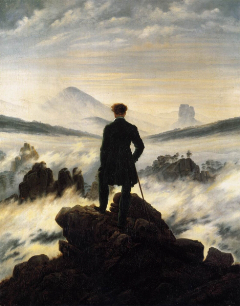
Caspar David Friedrich’s “Wanderer Above the Mist” [1818]
I’ve often thought about the concept of wandering — as a meditation on learning, exploring, finding answers.
But in a way, as well, it’s a path of deepening experience, because in wandering — there is a meander in discovery.
If you wander, to find a path, that veering — it’s a matter of finding a new way. Being out there, you find discoveries that are surprisingly sublime, mysterious, newly profound. There is learning that takes you to an unexpected territory.
There is risk in wandering — because you know you are your own leader; you find things that perhaps no other shall know. Beauty, freshly known; knowledge, newly revealed; learnings, gathered from another shore. That is the heart of the wanderer — that line that is navigated by the few.
I’d comment that the wanderer metaphor came to me in a series of meditations on my brother, Matt Girvin. Matthew passed in 2001 — he was lost in a rescue mission in Mongolia, surveying an emergency site in deep winter [https://tim.girvin.com/matt_index.htm].
And he, in a kind of fraternal alignment with my psyche, represented that spirit — The Wanderer. That figure came to me in a dream, first evinced in journal.

Then found in other spaces of my mind.
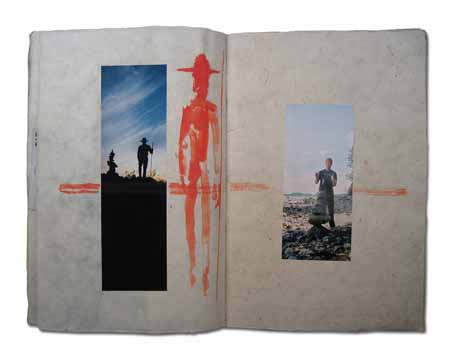
I explored the variations of the Wanderer in a series of paintings that examined the metaphor of the explorer in another way; they can be found here: https://tim.girvin.com/the_wanderer
And there is more to be found, more to be seen in this summary image, now hanging in my office near the Market in Seattle.
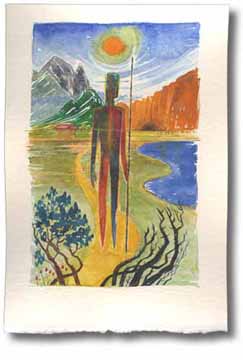
So I was struck by this reference, in evidence of leadership — the wandering found in the making of the personality of the life of Barack Obama. I surely don’t mean to imply that there’s anything about my self that relates to him — but rather that the concept of the allegory of the Wanderer as an attribute of his character.
That characteristic comes from his Mother: http://www.nytimes.com/14obama.html
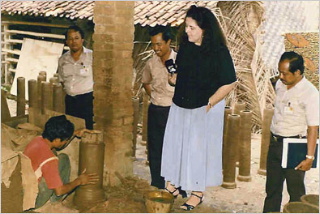
Ms. Soetoro in Indonesia (Obama archives)
“She felt that somehow, wandering through uncharted territory, we might stumble upon something that will, in an instant, seem to represent who we are at the core,†said Maya Soetoro-Ng, Mr. Obama’s half-sister. “That was very much her philosophy of life — to not be limited by fear or narrow definitions, to not build walls around ourselves and to do our best to find kinship and beauty in unexpected places.â€
Ms. Soetoro, who passed in 1995, was essentially the single parent that raised, in this visioning, Mr. Obama, the senator from Illinois and now, presidential candidate.
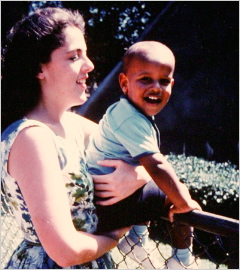
Stanley Ann Dunham Soetoro with her son, Barack Obama (Obama archives)
As NYT writer Janny Scott intones, “Though it is impossible to pinpoint the imprint of a parent on the life of a grown child, people who knew Ms. Soetoro well say they see her influence unmistakably in Mr. Obama.” Mr. Obama defines that relationship, in the preface for his book “Dreams From My Father” as “the one single constant in my life“. He added, “I know that she was the kindest, most generous spirit I have ever known, and that what is best in me I owe to her.â€
“She was a very, very big thinker,†said Nancy Barry, a former president of Women’s World Banking, an international network of microfinance providers, where Ms. Soetoro worked in New York City in the early 1990s. “I think she was not at all personally ambitious, I think she cared about the core issues, and I think she was not afraid to speak truth to power. She practiced what she preached — to her young son she outlined the importance of honesty, straight talk, independent judgment. When he balked at her early-morning home schooling, she retorted, “This is no picnic for me either, buster.â€
But there’s more to the references on the profound character of the man, the explorations, that have built his personality into the compelling visage that we all have come to learn about. That metaphorical impression of the concept of the Wanderer — and Barack Obama, hasn’t been framed merely in this opening offering from earlier this year, but as well — here: http://www.nytimes.com/24powe.html
Michael Powell gestures, recently in the NY Times, August 23, 2008: “That an air of the enigmatic attends Barack Obama is a commonplace; he is a man of fractured geography and family and wanderings. He came of age in far corners, Indonesia and Hawaii, went to schools on both coasts and landed in Chicago, where he had no blood tie. With talent and ambition, he has leapt for the presidency at a tender age and will go to Denver to claim his Democratic nomination for the office.” It’s been implied, and explored in the context of American literature, that we, as Americans, are infused with the genetics of this “rootless” character.
“There is to Mr. Obama’s story a Steinbeck quality, like so many migratory American tales: the mother who flickers in and out; the absent and iconic father; the grandfather, raised in the roughneck Kansas oil town of El Dorado, who moves the family restlessly, ceaselessly westward. The American DNA encodes wanderlust ambition, and a romance clings to Mr. Obama’s story. The roamer who would make himself and his land anew is a familiar archetype.”
This is the Wanderer — the journeyer that finds something in the new — the soul full traveler that uncovers, in adventure. And surely Joseph Campbell, America’s greatest mythology analyst, would suggest that the Wanderer is part of the hero’s journey — the path of patterning that is part of the human character. Myths and legends throughout history have expressed truths about what it is to be human.
Since the 1970s, expansively articulated in Joseph Campbell’s explorations, the study of the mythic dimensions of our lives has been advanced through archetypal psychology. Archetypes, according to Carl Jung, are repeating patterns or characters in our dreams and — in the myths and legends of all cultures — which reflect different aspects of the layering of the human mind. James Hillman, gathering his research from Jung’s studies, calls them ‘the deepest patterns of psychic functioning’ (Pearson 1998, p. 17). Carol Pearson — an introducer of the concept of mythic archetypes as a kind of analytical branding tool, also shows that these archetypes are the structures that are prominent in social systems.
Joseph Campbell’s leadership, groundbreaking as it was, made a study of world hero myths and in 1949 published The Hero with a Thousand Faces. His collected expansions on earlier Jungian studies suggested that the theme of each story was universal — the same story told across cultures and time. Like Jung, Campbell suggested their source is the collective unconscious, a grand psychic sea, of the human race and, because of their universality, these stories can be keys to understanding the complexities of human existence.
Campbell shows how the Hero’s Journey passes through many stages. These represent, although not always in that exact order, events in our lives that bring change. The Hero’s Journey — and, to my thinking the character of the wanderer concept — is a metaphor for life itself — that universal human threading suggests both the outer journey and the inner journey.
But in a way, the character of the Wanderer archetype is less about rootlessness and more to the idea of finding roots. And while for Mr. Obama this character is something to be celebrated and held in the heart of his makeup, his opposition offers a personal distancing:
“Senator John R. McCain, the presumptive Republican nominee, is the military brat who attended more than a dozen schools as his father, an admiral, moved about. The candidate, in “A Charge to Keep,†describes the effect of such wanderings: “First made a migrant by the demands of my father’s career, in time I became self-moving, a rover by choice. In such a life, some fine things are left behind, and missed. But bad things are left behind as well.â€
I can relate. What I’ve contemplated in wandering is the meditation of the road — that which is less traveled — and that which can be found on the path which is less known, riskier, more exposed; from there, new lessons are learned. More known, you are deepened.
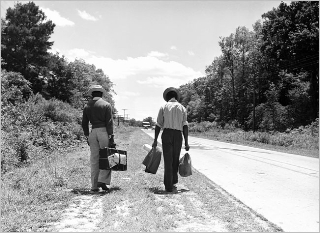
Jack Delano/Corbis Bettmann
tsg | decatur island
I “wandered” into your beautiful website as I was researching wanderers, pilgrims, etc. Your illustrations and words are beautiful. I am on an internal pilgrimage to my self and about to “take it on the road”. I’m not sure how and where, yet, but painting is helping me. I paint many doors and windows. Thank you for your work and wisdom
donna